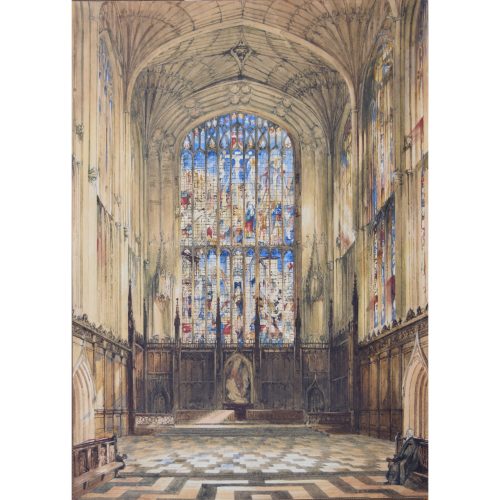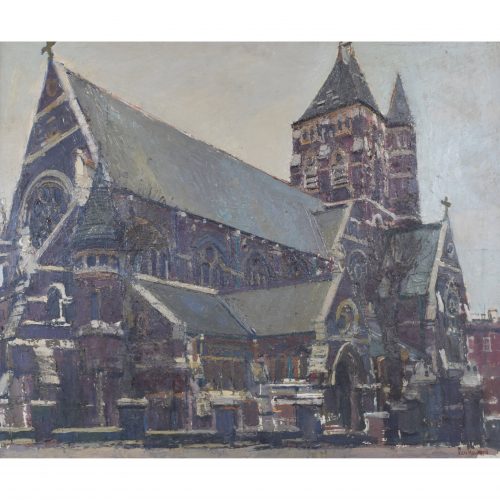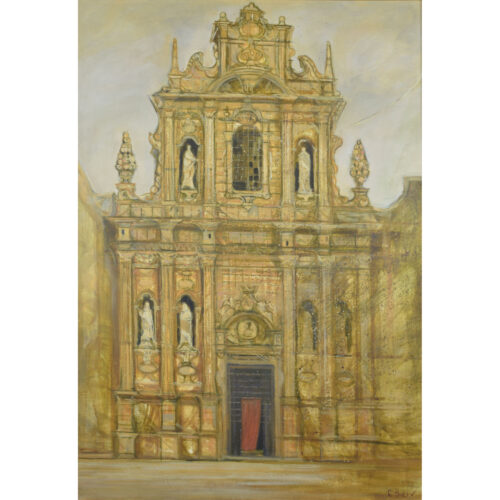John Anderson Bell (1809-1865)
King's College Cambridge Chapel Interior
Signed and indistinctly dated
Watercolour c. 1840
53x39cm
Bell was born in Glasgow; his father was James Bell, advocate and his sister Jane Cross Simpson the hymn-writer and poet. Following Edinburgh University Bell spent 1829 and 1830 in Rome as an art student, returning to the UK to serve his articles as an architect with Rickman & Hutchinson, the gothic revivalist practice in Birmingham. Subsequently he practised in Edinburgh, designing country houses, and the Victoria Buildings in Glasgow for the Conservative politician Archibald Orr Ewing in Scottish baronial style.
Thirty of the engravings in John Le Keux's magnificent 1847 book
Memorials of Cambridge are from paintings by Bell; this particular painting is believed to have been painted at the same time, although not published.
The Great East Window depicted in the painting was created between 1526 and 1531 by Gaylon Hone and three partners (one Flemish and two English) and - together with the other sixteen they made - represent some of the finest stained glass of their period. Here Bell has captured the colours and the light of the window in almost magical fashion. It is an interesting view as it records the chapel in the mid nineteenth century. In 1968 the installation of Rubens'
the Adoration of the Magi as an altarpiece involved the lowering of the Sanctuary floor through removal of the steps clearly visible in Bell's view and also removal of the seventeenth century panelling around the walls.
It is still felt that the chapel would have been better left 'unimproved' and without the Reubens, though the form recorded by Bell had itself been improved in 1906 when
Detmar Blow designed a reredos. Blow's reredos remains in storage in the College.
The East window may be viewed in high resolution in the series of
seven short films - accompanied by music by King's alumnus Francis Grier - entitled Sword in the Soul.



